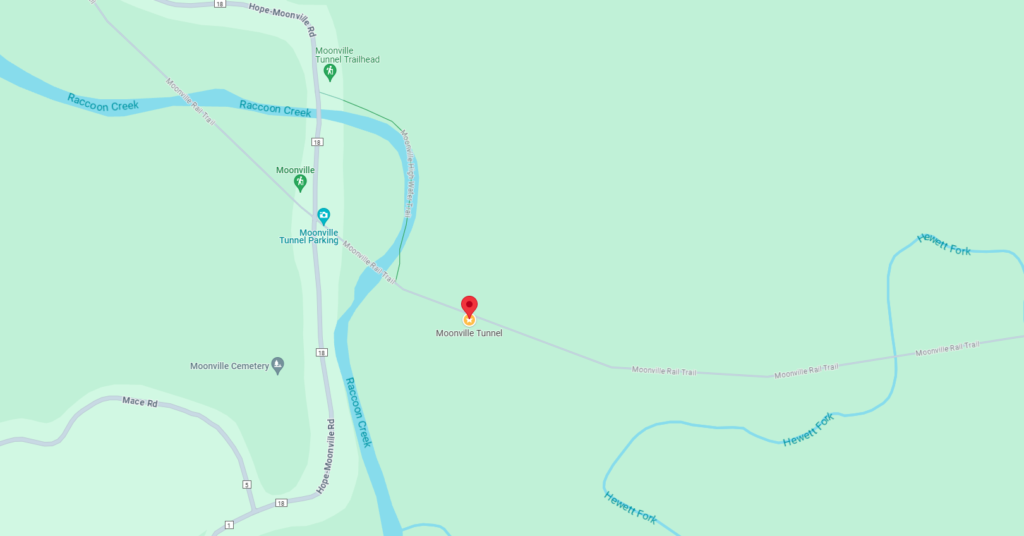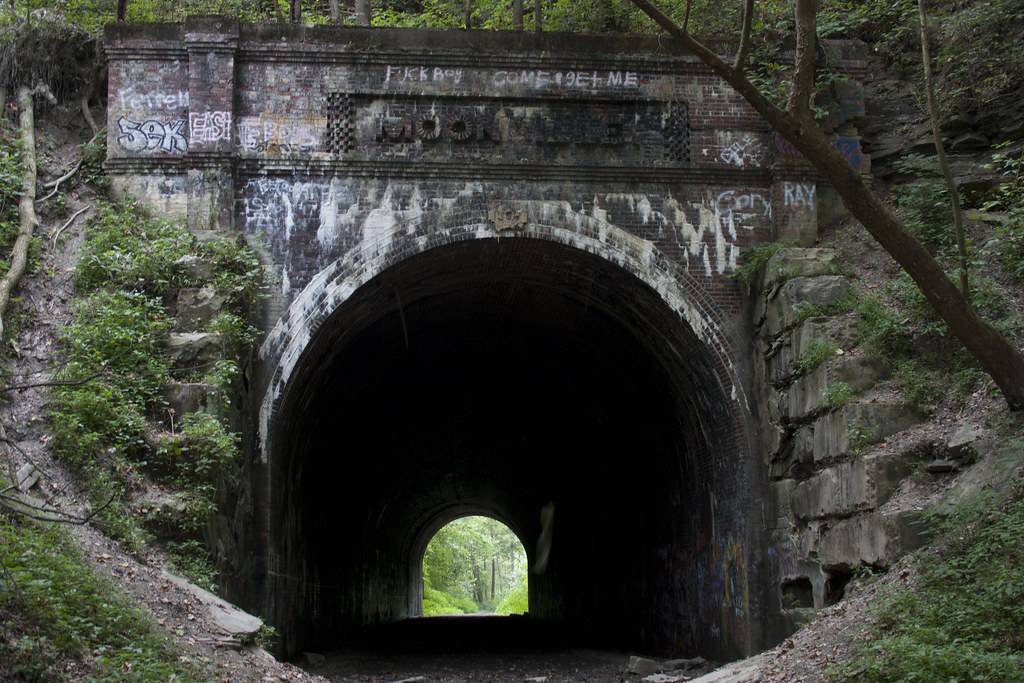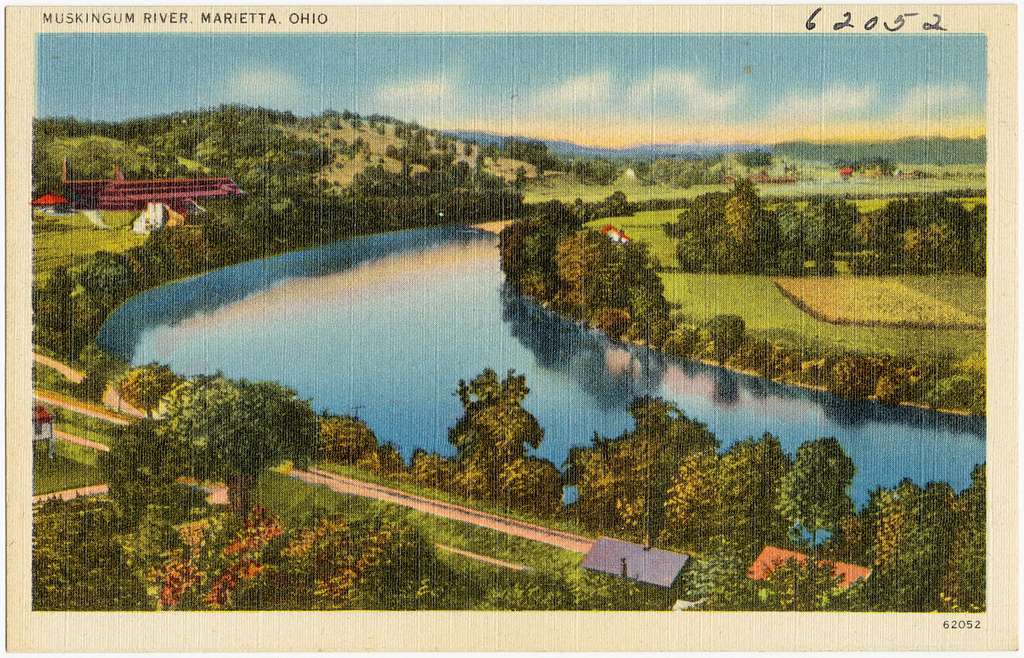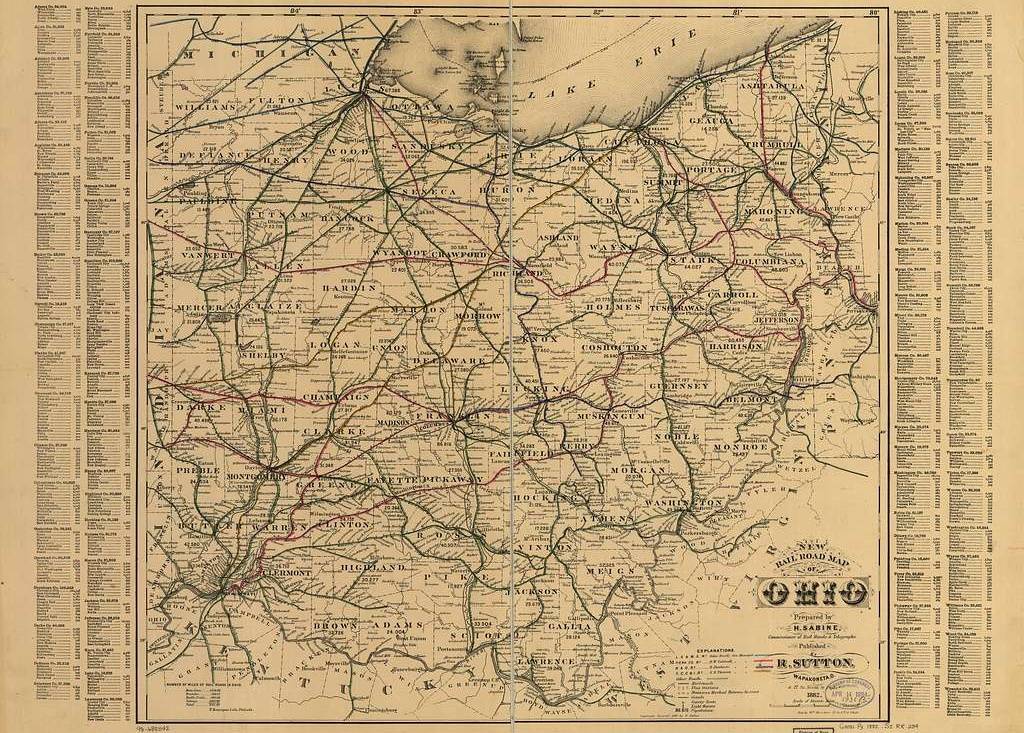In the early days of Ohio history, new communities were being created at a fairly quick pace. While most of these towns grew to become villages or towns or cities, not all places were quite so lucky. Some communities, for whatever reason, never got their chance to shine. Others were based on religious or philosophical principles and never gained the popularity their founders believed they could obtain. And some communities thrived for a short time, but then dwindled to oblivion when something changed – for example, communities that were built around mines would fall apart when the mine dried up, or towns that would thrive for a short time because of a railroad stop might cease to exist once trains were no longer the preferred mode of transportation.
For some, these ghost towns are an endless source of fascination. Some people want to explore whatever remains, as if trying to get a glimpse into a historical past that is no longer available while others seek them out attempting to discover some item or trinket (okay, or treasure) that they can claim for themselves. Sometimes interest is piqued by a genealogist, trying to connect with their ancestral lineage. Or, maybe a ghost town is where some important (or, not so important, we don’t judge) event in history took place.
So, I guess there are quite a few reasons people may become interested in ghost towns.
One of Ohio’s more popular ghost towns was a little place called Moonville.
When and How Moonville Was Named
There is a lot of speculation over the question of When Moonville got its name, and who it was named after. And after reviewing all the evidence, all I can say is “I have no idea.”
While searching through old newspapers, the earliest mention of it that I found was from an 1857 newspaper from McArthur, Ohio which stated another nearby newspaper was reporting that two new Post Offices had been opened on the Marietta and Cincinnati Railroad line, one in Mineral, and one in Moonville. (Sadly, not all newspapers have been archived or digitally indexed, so it’s entirely possible mentions were made well before 1857.)
That same newspaper reported the following year that a road was being built which would go through Moonville.
Moonville soon became a stop on the Marietta and Cincinnati Railroad, which came into existence in 1851 and was finished in 1857. Since it is hard to think about a town (or any kind of settlement) existing without either a road or a rail – it’s probably a safe guess that people weren’t living there much before the 1850s.
Another thing you probably need to know about the Moonville area is that it is heavily forested, and it was fairly isolated. In other words, there wasn’t much there to see or do, and railroad employees would later complain that this section of the track was boring to traverse.
According to legend, Moonville was named after the owner of the general goods store, a man with the surname Moon. The legend does not tell us Mr. Moon’s first name, or any information about the general goods store, so there’s not a lot to go on. And I think we all know how reliable legends can be.
In his book A History of Moonville, Ohio, author William M. Cullen states he believes Moonville was named after either Silas Moon, or his son George. Or, if not them, then one of their relatives. This was information he learned from a student who wrote a history paper on Moonville and had managed to track down some people who had lived in Moonville at some point. He also got some of his information by doing genealogical research.
This may, someday, prove to be correct. However, I am not convinced.
Silas and his son George did live in Ohio, but nowhere near Moonville. They, and nearly all of their Moon relatives lived in Summit County, in an area just west of Akron. That’s somewhere around 130 miles, as the crow flies. And since we’ve established that Moonville was named around the time the railroad came to town, and before the first road was built – this seems like a terribly long commute.
What Was In Moonville
Again, we are hindered by the fact that there are so few records that appear to be available today. It was a stop on the Marietta and Cincinnati Rail Road, and there was some farming and mining happening in the area as well. In more recent history, the train tracks were dismantled, and a project began to rebuild the bridges that had been destroyed and turn the path into hiking and biking trails. Explorers wandering through the area have also found a number of foundations where buildings once stood, and a short distance away is the Moonville Cemetery.
And at this day and time, that’s all that seems to be left of Moonville. That’s not to say that at some point in the future, someone might find something else.
I can also state that Moonville did have a general store. I can’t state one way or another if this store was owned by someone named Moon, but I can tell it existed.
In 1876, the Richwood Gazette (Richwood is northeast of Columbus) reported that E. D. Jefferson, Esq. – a “prominent merchant” from Moonville, had been reported missing on a trip to Columbus to buy goods and that his friends and family feared he had met with foul play. I could find no other references to Mr. Jefferson or his disappearance, so I was unable to venture any further down this path. A newspaper report from ten years prior suggested a man was killed on the tracks while returning home from buying groceries in Moonville. Both are good indicators that the town did, at least, have a general store.
Newspaper and census records that I searched through suggest that Moonville did have a church and school building as well. The only business name I could find was the Vinton County Oil, Mining, and Lumber Company, (The Moonville Mining Company) as well as an office of the Marietta and Cincinnati Rail Road, which in 1882 merged with the Baltimore and Ohio Railroad.
In 1921, the Moonville School officially closed its doors, but I have so far been unable to find any information about when it first opened.
Death On The Tracks
While doing the deep dive through old newspaper accounts mentioning Moonville, the earliest mention of the town I came across was from the June 26th edition of the M’arthur Democrat (a newspaper) telling how a train from Athens had derailed at Moonville. The fireman broke his leg when he jumped off the train. The wreck had been caused by the spreading of the tracks, something that we now know can happen when train tracks expand in warm weather and contract in cold and can cause the rails to shift. The article went on to say that repairs to the tracks were not being made, either because the workers were on strike for higher wages, or because they had not been paid for previous work. (The author of the article wasn’t sure.) But, stories like this were, it seems, fairly common.
The number of people maimed or killed on tracks during this period of history is likely a bit higher than we realize today. There are several reasons for this. It’s important to remember that back then there weren’t safety standards for railroads (or much of anything else, for that matter). Another thing to consider is that people often walked along train tracks when they provided a more direct route to wherever they were going, and many deaths were caused by people on foot who couldn’t get across a bridge or out of a tunnel before the train was on top of them (quite literally). Many also operated at night in a time before the use of bright lights, and many “accident” was caused because someone couldn’t see at night as well as they could during the day.
Alcohol also caused a great number of injuries. Train workers, who often had to hang off the side of cars, or walk from roof to roof, frequently turned to alcohol, especially to help battle the effects of colder weather. This was work that was difficult enough completely sober, but add a state of drunkenness and things could turn deadly very quickly.
The newspapers often reported on deaths, often without giving the victim’s name. For example, in 1873 a woman “was struck by an express train on the M & C R. R., last Saturday, and was instantly killed.” (This paragraph was printed in several local papers.) Other pieces would simply state that a man was killed on the bridge when he was struck by a train while visiting his mother, or a young man was killed in a tunnel by a passing train. As these often don’t even report the victim’s name, it makes me wonder if it was such an occurrence was so common, it wasn’t even considered newsworthy…?
The times when rail workers were killed were not always reported. Some today suggest this is because the railroad companies did not want the negative publicity, while others say this was nothing more than a known job hazard of the rail industry.

Moonville, Today … A Ghost Story
Moonville’s modern history appears to have begun after a group of hikers “discovered” the forgotten Moonville Tunnel while hiking and camping in the region. It wouldn’t take long for word to get out and the area became a popular destination for those seeking interesting hiking trails, as well as to explore the area. Ultimately, work began on converting the old rail tracks to paved biking and hiking trails, rebuilding the bridges, and trying to make it a more desirable destination for a day in nature.
The earliest mention of a ghost in Moonville I could find came from an 1895 article in the Chillicothe Gazette. This tells how “The ghost fo Moonville” has returned after a year’s absence and is once again doing it’s old pranks, haunting B. & O. S.-W. trains.
The ghost was said to be wearing a white robe, carrying a lantern. He had a full white beard and had eyes of fire. It had a halo of twinkling stars. “As the train approached, the lantern was swung across the track.” No sooner had the train breaked, the ghost disappeared. The place this happened is believed to have been the exact spot where a train had derailed previously, injuring Engineer Wash Walters and killing an engineer named Lawhead.
The Tunnel Ghosts
Two of the more popular ghosts that are said to haunt The Moonville Tunnel include an Engineer and a Breakman who are believed to have been killed in an accident in the tunnel itself. The Breakman appears as a shadow spirit while the engineer who has appeared to visitors asking about the tracks. Others note a ball of light that can appear in the tunnel, which may or may not be one of the two. (My guess would be the breakman since his profession would require him to carry a lantern at night.)
The Bully
I’ve heard conflicting accounts of who The Bully of Moonville is. Some claim he was a drunk driver who was somehow killed in the tunnel while others say it’s the spirit of a young boy who gets bored and starts playing pranks. Either way, people have reported that they were pelted by small stones, or even much larger rocks. Nobody ever seems to see the rock thrower, but sometimes ghosts can be like that it seems.
The Lavender Lady
The Lavender Lady is said to be walking along the tracks by herself. She appears as an older lady, hunched over, possibly carrying a walking stick, and wearing lavender colored frock or coat. Viewers see her falling, but she disappears the instant she hits the ground.
The Girl Scout
A few-minute hike down the Moonville Trail will bring you to a bridge where a young girl (a girl scout) is said to have been killed while trying to cross a bridge and being hit by a passing train, her body falling into the creek below. Her ghost is said to haunt the site, especially in the evenings, and can be spotted both on the trail as well as the rocky creek below.
The History of Moonville
The town of Moonville, Ohio, was a fairly typical small town that tried to build itself up as the country began to expand from the original thirteen colonies to what it is today. The main business was mining, farming, and the production of lumber. The railroad, originally the Marietta and Cincinnati Railroad, and later the Baltimore and Ohio Railroad, not only helped residents and visitors but also allowed businesses to ship supplies to where they were needed most. There was a short-lived period where people were talking about making the Racoon River a bit deeper to facilitate travel to other nearby areas, however, this never came to fruition. It was just too much work for such a small benefit, and with all the focus being on the rails, and new roads being built, nobody thought it was needed.
As long as the mines produced valuable coal and iron, the village prospered. A number of houses were built, as well as a hotel or boarding house that rented rooms to families and mine workers, and probably offered dinner and entertainment, too. Both a church and a school were built to serve other needs of the community.
A lot of things had changed by the start of the twentieth century, and many of these small-town mines were forced to close when the mines dried up. Without jobs in the mines, workers began to flee to places where they were needed and where they could make a living. The last Moonville resident is said to have moved out in the 1940s.
For years, whatever remained was left to be reclaimed by nature and that is how you will find the place today. All that remains of the original village are The Moonville Tunnel, a few foundations and some pylons from where the railroad crossed the creeks. As the old railroads are being converted to biking and hiking trails, these pylons are being reused whenever possible as new bridges are being built.
What sets Moonville apart from other similar coal towns is the way it seems to be more popular now, as a ghost town, than it did in its heyday. People are seeking out Moonville as a hiking and biking destination, and it’s pretty clear to see why that is. And, some people are seeking out Moonville, trying to see a ghost or two. The site has been featured on Ghost Hunting television shows as well as paranormal investigator YouTube channels (among others).
But, even if you don’t believe in no ghosts … it might still be a place you’d



